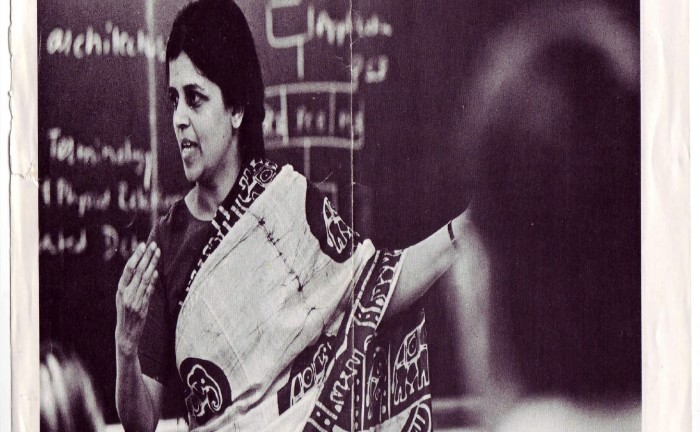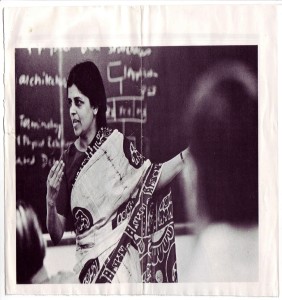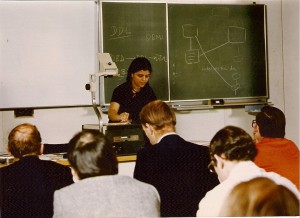
Part01 – Tips for Public Speaking: Rules of Thumb to become an outstanding public speaker
Part 01 – Rules of Thumb to become an outstanding public speaker
Tips for public speaking: It is an Art as well as Science
I am describing my approach of speaking in the public, which I prepared in response to requests from audience members at a number of training sessions, seminars and as a keynote speaker at various events over the last many decades. With this skill I have travelled to 35+ countries, some repeatedly, over the past decades. I had a lot of fun speaking to groups of only a dozen to a few thousand in the audience. Maybe you’ll find something here to help in your own speaking engagements.

Shaku teaching database design at IBM SRI, New York City
How do I approach my public speaking engagements?
I don’t like to just speak to the audience; I like to connect with them. In order to connect with an audience, a speaker has to motivate them, inspire them, entertain them, and then instruct them. And it should be done in this order. We travel together on the journey of imparting whatever I want to convey to them. And, the bigger the audience, the better is my delivery. When I write or speak I know that I am not doing it for myself, I am doing it for the audience. My audience is always with me and I am with them.
A presentation should really be a performance. The presenter is on a stage, with a captive audience. I see myself as a performer–who must do much more than merely present the material. As a speaker you owe it to your captive audience to perform to the best of your capability; you have to return the favor because they are listening to you.
Preparation for the Performance:
To prepare, I arrive in the room where I am to speak at least an hour ahead of the audience. I get a feel for the room. I test all audio/visual (A/V) gadgets and make sure EVERYTHING works. I make a point to establish rapport with the A/V people–by reminding them that nothing is possible without their help, and I find out how to contact them if a problem arises later, especially one that happens during the presentation! I try to get their cellphone numbers, and invariably they give them to me. Only once out of all these hundreds of speaking engagements did the A/V person have to come in to resolve a major issue. And while the crew was working on the A/V, I walked up to the audience and continued to speak without any A/V. It worked very well and I received many accolades for it.

Shaku is speaking in La Hulpe, Belgium to IBM Professionals – Database Technology
I also like to scout out the location to note whether there are any steps that I might have to climb or descend. This is because when I’m presenting from a big stage I’ll want to get down into the audience from time to time. When I’m out in the audience, I’ll walk back to the “back bleachers,” establishing a relationship with them and helping everyone in the room to realize we’re in this together! This is why I need to get the feel of the entire space! And most of the times the big hall with the audience is dark. The speaker sees mostly the front rows. But the speaker has to look at the audience as if you can see the entire audience because the audience can see you – the speaker – so they think you can see them too.
Relationship with the audience:
As the performance begins, I try to establish a warm relationship with the audience in the first five seconds. I let them know, with a strong presence and a few looks at audience members, that I am the one in charge–and that they have chosen to be in the audience! In other words, at the same time that I establish friendliness through interaction with the audience, I make my authority abundantly clear. The first minute of my speech is the most important one. I get hold of my audience or it will be an uphill battle. That means I have to rehearse where I will stand, how I will start, and which friendly faces I will look at during the entire session.
Eye contact with the audience:
I look to all corners of the room–to the right, midway between the right and straight ahead, straight ahead, midway between straight ahead and left, and to the left, and then all the way between the frontline and back benchers. As a result, everyone in my line of sight in the audience feels included and thinks that I am looking at them. Eye contact is a very effective way to establish authority. I keep on re-establishing eye contact throughout my presentation. This keeps the audience with me. I’ve had groups as small as 20 and as large as 3,000–and a beautiful rapport with each and every audience member. I love the audience and the audience loves me back.



